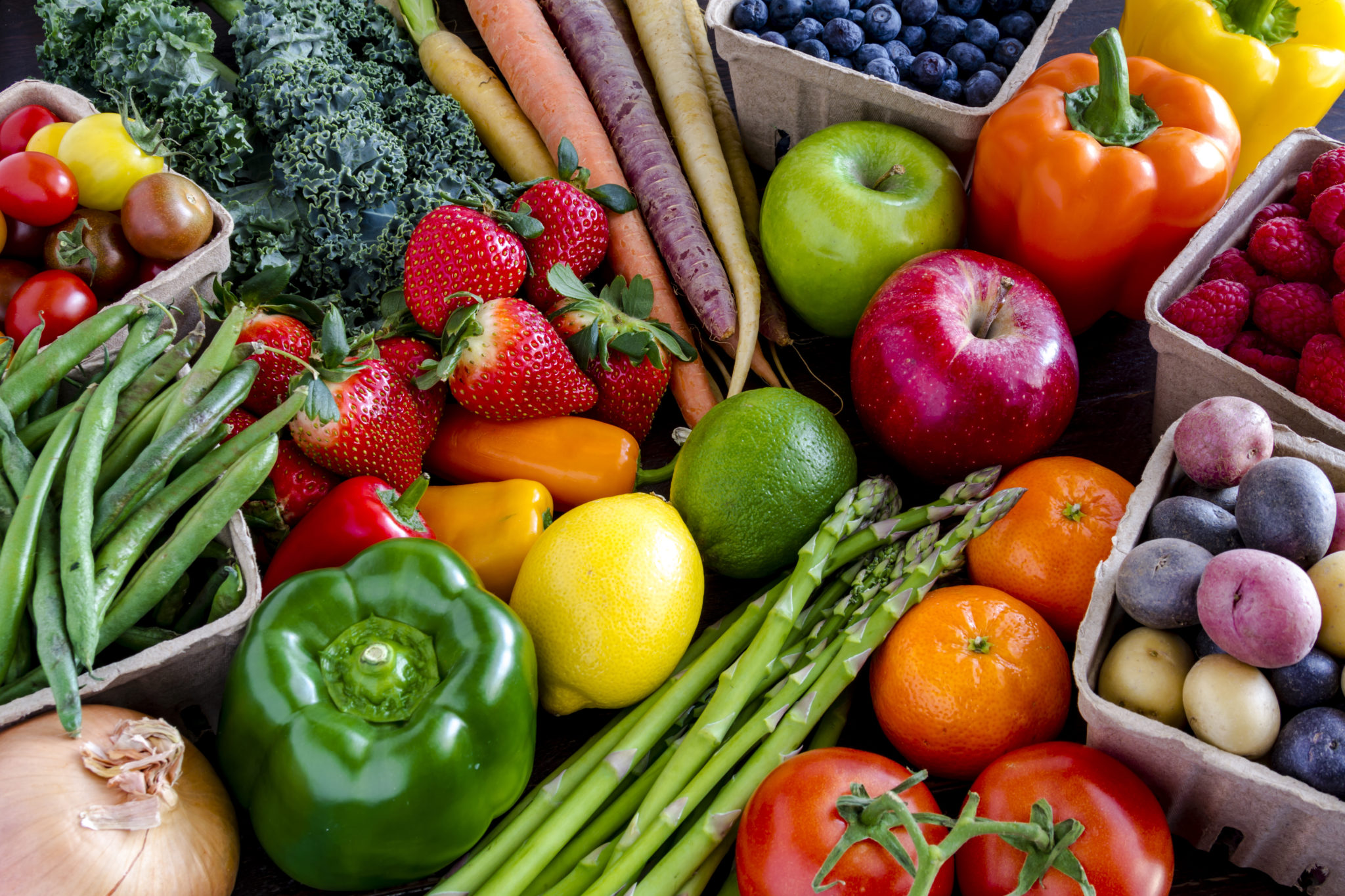
MyPlate Food Groups: Fruits & Vegetables
Welcome back to our MyPlate Food Groups series! We start off this year with some of our favorite foods: fruits & vegetables! Read more to learn about what foods are included in these groups, the importance of fruits & vegetables in our diets & how many servings of these foods we should aim to eat each day. We wrap up with delicious snacks & side dishes that highlight fruits & vegetables.
What foods are included in the fruits & vegetables groups?
A healthy eating pattern as described in the Dietary Guidelines for Americans includes a variety of vegetables from the five vegetable subgroups—dark green, red & orange, legumes (beans & peas), starchy & other. These include all fresh, frozen, canned & dried options in cooked or raw forms, including vegetable juices.
Vegetables are important sources nutrients such as dietary fiber, potassium, iron & vitamins A, C, E and K. Each different subgroup of vegetables contributes different combinations of nutrients which is why it is important to eat a variety of vegetables. For example, red & orange vegetables provide the most vitamin A, dark-green vegetables are high in vitamin K, legumes provide the most dietary fiber & starchy vegetables are rich in potassium.
The table below shows examples of vegetables in each subgroup:
| Vegetable Subgroup | Examples |
| Dark-Green Vegetables | Broccoli, Spinach, Leafy Salad Greens, Kale |
| Red & Orange Vegetables | Tomatoes, Carrots, Sweet Potatoes, Red Peppers, Winter Squash |
| Legumes | Pinto/Kidney/Black Beans, Lentils, Chickpeas |
| Starchy Vegetables | Potatoes, Corn, Green Peas |
| Other Vegetables | Onions, Green Beans, Cucumbers, Celery, Cabbage, Mushrooms, Cauliflower, Eggplant, Asparagus |
A healthy eating pattern also includes fruits, especially whole fruits. Whole fruits include fresh, canned, frozen & dried forms. Here are some recommendations for making healthier fruit & vegetable choices:
- When buying canned vegetables and vegetable juice, choose products that are lower in sodium.
- When buying canned fruit, choose fruit that is packed in 100% juice.
- Choose juice that is 100% fruit juice. Some juice drinks are considered sugar-sweetened beverages rather than fruit juice because they are mostly made up of water with added sugar. The percent of juice in a beverage may be found on the package label, such as “contains 25% juice” or “100% fruit juice.”
Why do we need fruits & vegetables?
Eating a diet rich in fruits & vegetables as part of an overall healthy diet can help protect against many chronic diseases, including heart disease, type 2 diabetes, certain types of cancers & obesity. A lot of the health benefits of eating a variety of fruits & vegetables come from the vitamins, minerals, fiber & other nutrients found in these foods. Here is a list of some of the nutrients & health benefits that fruits & vegetables offer:
- Fruits & vegetables are important sources of nutrients such as potassium, dietary fiber, folate, & vitamins A & C.
- Potassium may help maintain healthy blood pressure.
- Fiber helps reduce blood cholesterol & may lower the risk of heart disease.
- Folate helps the body form red blood cells.
- Vitamin A helps keep eyes and skin healthy & helps to protect against infections.
- Vitamin C helps heal cuts and wounds & helps with iron absorption.
How many servings of fruits & vegetables do I need per day?
Although we know that fruits & vegetables are good for us, the reality is that most people do not consume enough of these foods. Data from What We Eat in America, National Health and Nutrition Examination Survey (NHANES) 2007-2010 shows that about 75% of the US population does not meet the recommended fruit & vegetable intake per day.
The recommended amount of fruit & vegetables for a 2,000 calorie a day diet is 2 cup-equivalents of fruits & 2 ½ cup-equivalents of vegetables per day.
In general, ½ cup-equivalent of fruit is equal to:
½ cup portion of fresh, canned or frozen fruit
½ cup of 100% fruit juice
or ¼ cup of dried fruit
When it comes to vegetables, 1/2 cup-equivalent of vegetables is equal to:
½ cup of raw or cooked vegetables
½ cup of 100% vegetable juice
or 1 cup of leafy salad greens
To get a better idea of how many servings of vegetables and fruits you need based on your age, sex, height, weight & physical activity level, build your personalized MyPlate Plan here!
An easy way to add more vegetables & fruit to your diet is to include them as snacks, side dishes & salads! Check out some examples below:
Jazz up a plate of raw vegetables with ONIE’s homemade ranch dip OR if you are looking for something sweet, try our sweet vanilla or peanut butter pumpkin dips with a cup of fresh fruit.
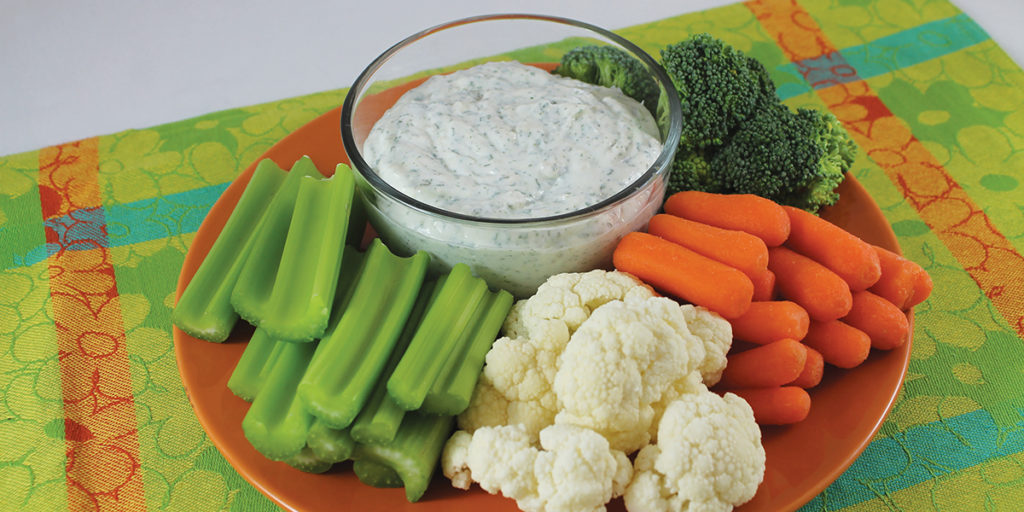
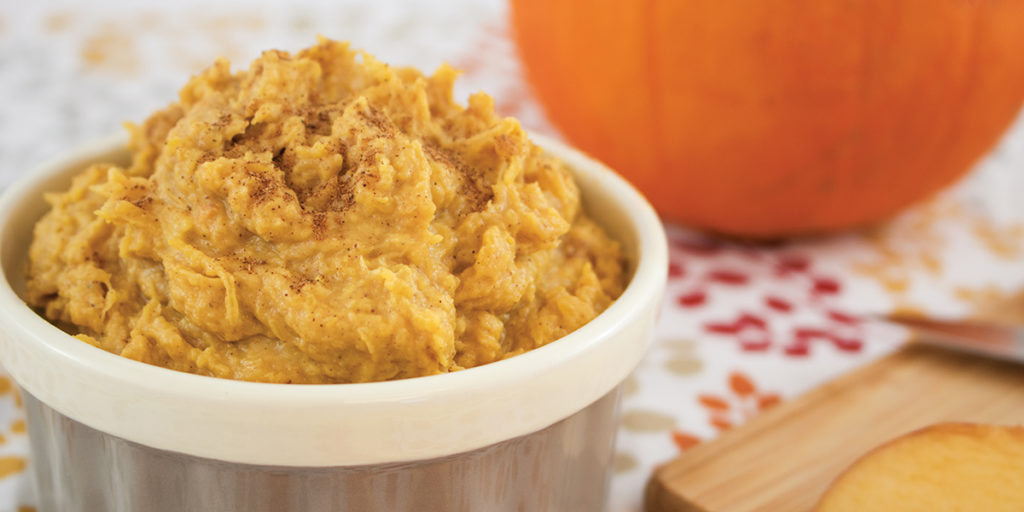
For side dishes, check out these chili lime roasted sweet potatoes or parmesan zucchini squash fries. Or how about adding vegetables to rice? Try a delicious curried veggie rice!
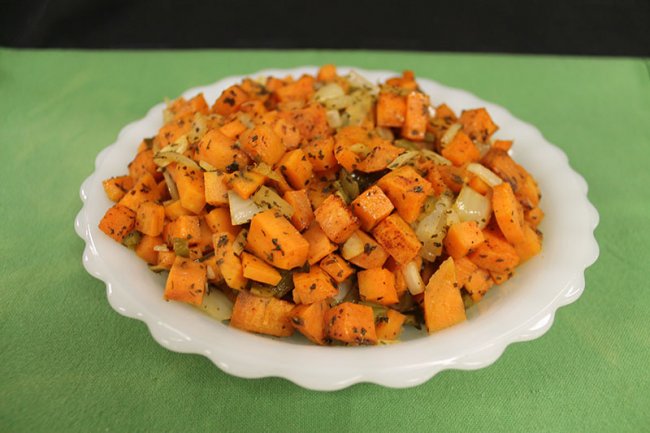
Finally, this southwest salad with creamy cilantro dressing makes it easy to include all the vegetable subgroups in one bowl: leafy salad greens (dark-green vegetables), tomatoes (red & orange vegetables), black beans (legumes), corn (starchy vegetables), & onions (other vegetables group).
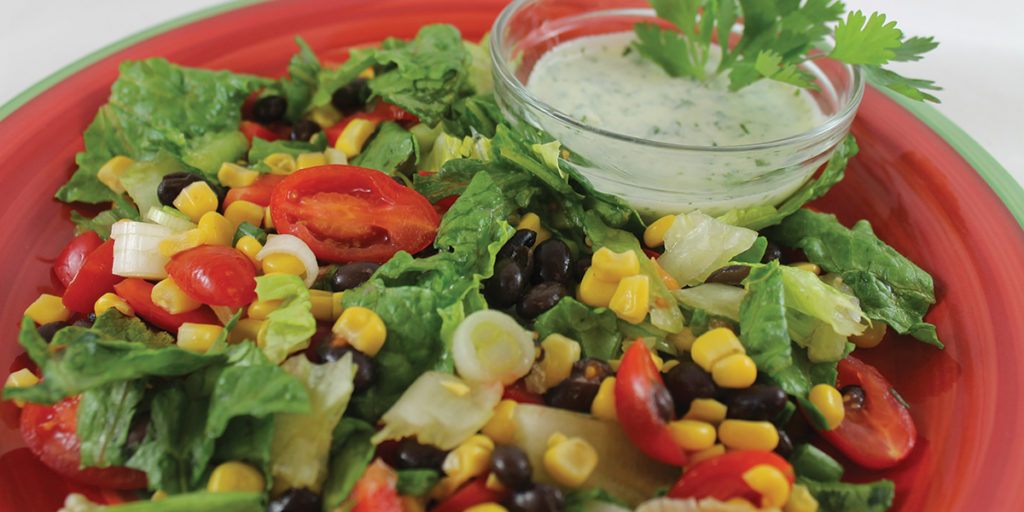
Follow us next month as we conclude our “MyPlate Food Groups” series with the dairy group. Also, let us know what are some of your favorite vegetable or fruit-filled snacks & side dishes!


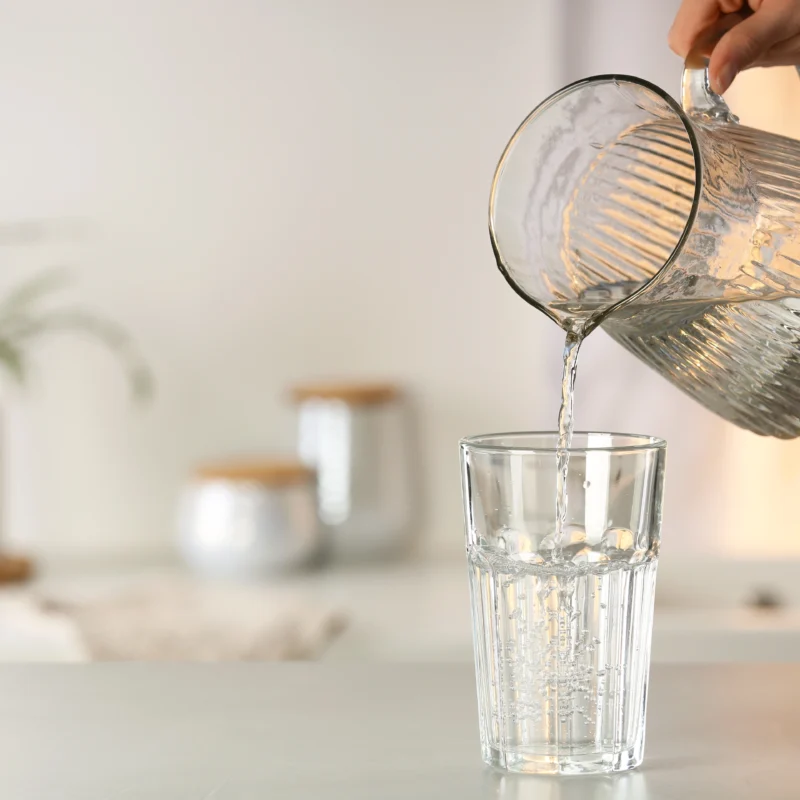
I like gala apples, strawberries, grapes, bananas, watermelon, cantaloupe, most all vegetables, except, zucchini,artichokedates, fogs